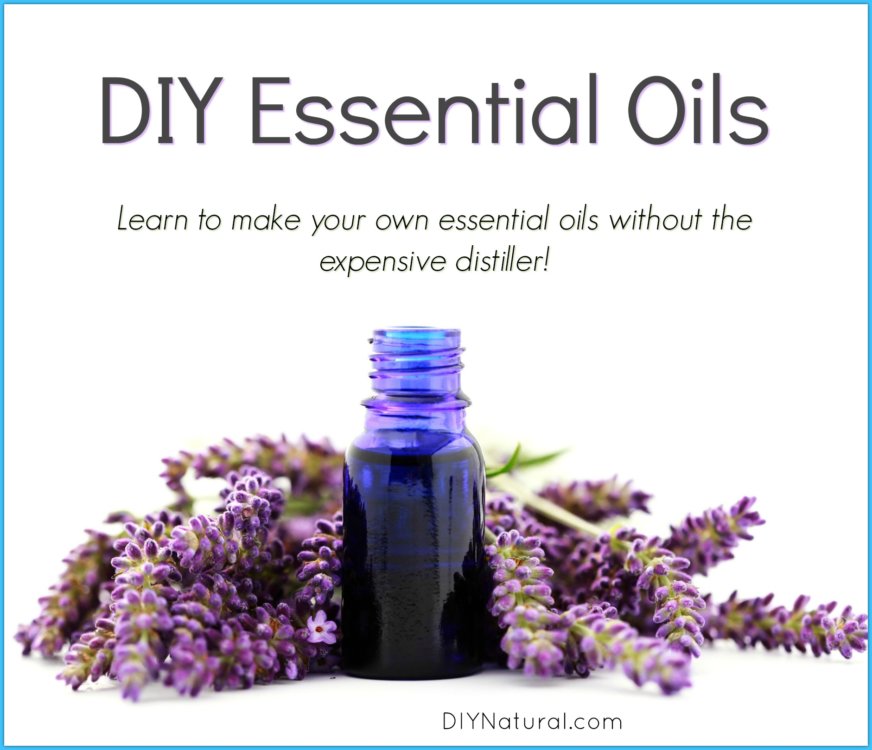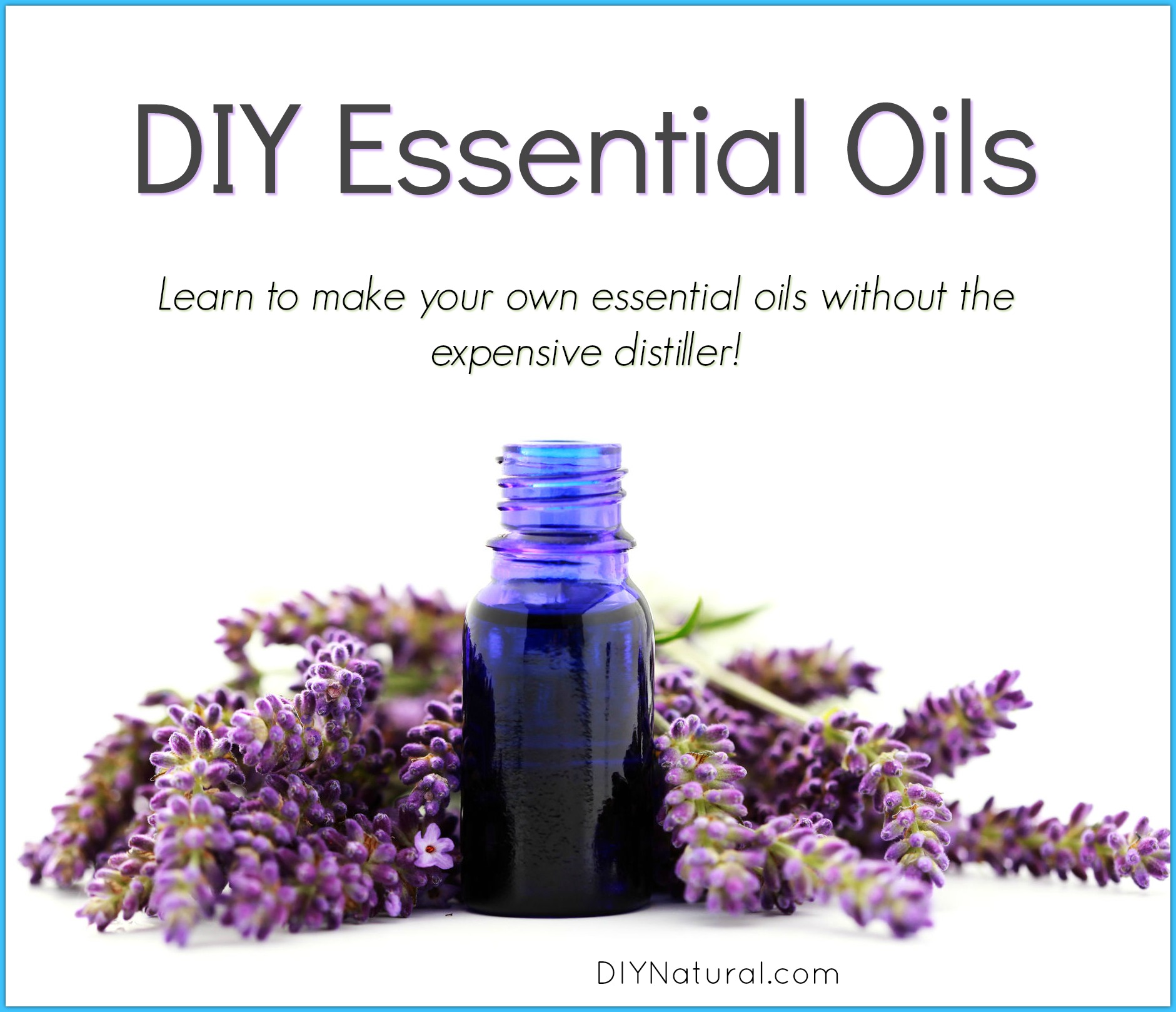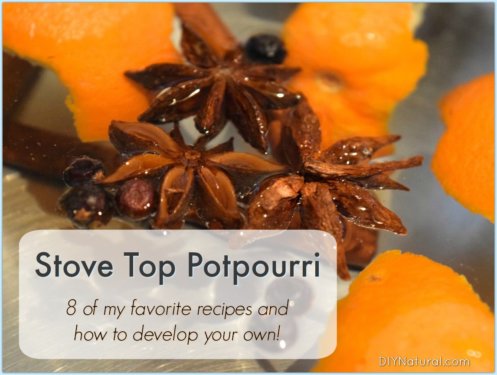
Making DIY essential oils is easier than you think. Yes, you could buy a copper still, but that is expensive, so we did it with a crockpot!
Essential oils can be expensive. And sometimes it can be difficult to find the ones you want.
Did you know you can make your own?
Essential oils are volatile oils you can extract from plants (or other sources). The typical method of extraction is steam distillation. You can actually purchase or make your own still for this purpose. I found a nice copper 2-quart still for around $400; still too much money for me. So I set out to find out how I can make my own oils without the expensive still.
DIY Essential Oils
While you can make your own, beware that most “essential oil” recipes on the internet are really infused oils. It helps to know the difference.
Essential Oils vs. Infused Oils
Infused oils are made by soaking herbs in a particular oil to extract active compounds. Some botanicals, such as calendula, infuse very well and create a very healing oil. But some, like lavender, are never quite as good as the actual essential oil.
Many essential oils are steam distilled, which involves simmering the plant material to produce steam, which travels through a tube, which is then run through cold water. The liquid that forms from condensation will be in two parts, a water compound, and an oil compound. The water compound is where floral waters, such as lavender and rose water, come from. The oils that rise to the top are DIY essential oils.
Easy DIY Essential Oil Extraction
Using this method, you can extract essential oils from plants you might not usually find oils from. I love mint, chocolate mint being my favorite. But seeing chocolate mint essential oil usually left me with flavored oils, not the real thing. I was able to make a small amount of chocolate mint essential oil which was amazing, although it took a lot of plant material for a small amount. Grapefruit mint will be my next experiment.
You can also make blends that aren’t found in nature. I made DIY essential oil from oakmoss, lavender, and patchouli. I was able to get a small patchouli plant from my local hydroponics store. The scent was amazing! But like the chocolate mint, the amount of oil yielded was small.
Ingredients & Supplies for DIY Essential Oils
- a crockpot with a lid
- distilled water
- enough fresh plant material to fill the crockpot about half full (at least 3-4 cups, chopped)
- time
Process
- Place the plant material in the crockpot and cover it with water. The water shouldn’t fill more than ¾ of the volume of the crockpot. Put the lid on upside down. (The concave structure will allow any steam that forms to condense and fall back into the pot. If you don’t have a lid, you can use a plate.)
- Turn the crockpot on high to heat the water. Once the water is hot, turn it down to low. Simmer on low for 3-4 hours.
- After the plant material is cooked down, turn it off and let it cool. When it is cool, place it inside of the crockpot in the refrigerator. If your crockpot doesn’t come apart, you can place the whole unit in there, or transfer the liquid into another container. Leave it in overnight.
- The next day, pull the crockpot out of the refrigerator. A thin film of oil will form on the top and will be hard after cooling. (These are your DIY essential oils!) Carefully lift the oil off of the water. Work fast – it will start to melt quickly!
- Place this into a bottle and cap. Label contents well. There may be a small amount of water-based liquid on the bottom. You can gently heat the oil to turn the liquid to steam and release it from the oil. Don’t heat the oil for too long as it can lose its potency.
- Store in a colored glass container (like these bottles) away from light and heat.
To Use
You can use these DIY essential oils just like the ones you purchase, but they may not be quite as strong as what you are used to. Be prepared to use more than you normally would.
Important DIY Essential Oil Tips
- It’s best to use fresh plant material rather than dried. Dried herbs will still yield some oil, but fresh will result in more volume. Harvest plant material in the morning after the dew has dried. Discard any dead, diseased, or bug-infested herbs.
- You’ll need at least 3-4 cups of plant material. This will result in a few teaspoons of DIY essential oils. (Now I understand why the oils are so expensive!)
- Chop your plant material to increase the surface volume and allow more oils to escape.
- Distilled water is important since tap water can have bacteria or other contaminants that may spoil your mix.
How to Make Essential Oils Video
Want to just buy them instead?
If you don’t think DIY essential oils are for you, don’t worry. DIY Natural uses and recommends pure, therapeutic-grade oils from Mountain Rose Herbs. We love their selection, prices, and quality, and think you will too!
*******




I would love to try a honeysuckle essential oil. Would i just use the flower or also the plant parts?
Hello, is this method successful to use with roses/what has your experience with roses been? (I have an abundant source of rose petals and anticipate a tiny yield, so that is not my main concern.) I am highly considering using this process for a biochemistry project.
I tried it with wild roses, Zoe, and it worked well. Yes, the yield is tiny for a lot of plant material, but it’s so worth the effort. I think it would make a great biochemistry project!
Wondrous, thanks! How much should I chop up the petals?
Additionally, do you remember how much plant material you used? I’m looking into getting 3000 fresh rose petals.
I’m wondering how you did the chocolate. Did you use actual Cocoa beans? Or cocoa powder, actual cocoa?
I used cocoa nibs, Candice. The amount of oil produced was very little, but it was really nice. I’m sure you could use cocoa beans, but the nibs give you more surface area for more of the oils to be released.
Thanks! I tried this with cucumber skins and orange peels just to test it out but didnt work. How long do I leave in the pot to simmer?
I know this is a little bit out there, but what would your suggestions be for trying to make a black pepper EO?
I see it used it warming salves all the time and I have a big jar of pepper that I could use. Any ideas would be welcome since I’ve never made EO’s before.
Assuming you would use peppercorns.
That’s right, Candice. I would use peppercorns, LB, but I would crack them first. Again, more surface area allows for more oil to be released.
Could I use our well water? Can’t wait to try it. Thank you.
You could use well water, Robyn, although any minerals or other things, like sulfur, may affect the taste or scent of the oils. You’ll love this project. Just remember that it takes a lot of plant material to make a very small amount of essential oil.
I love this! I am wondering, though, about my Instant Pot. First of all, I’m wondering if I could use the steam setting, and then the slow cook setting. With either, the condensed water is sealed in the pot and some of it drips back into the pot. I may give it a try….
I’ve never used an Instant Pot Amy, but I would think it would work great. If it’s a sealed unit,. you won’t have any steam escaping, so it would all stay contained. Let me know how it works!
hey! i found your article quiet helpful. i was wondering if i can make mint EO since i have it in abundance. and i would also like to know if i can use orange or any other fruit peels to extract oil outta them.
thank you
You sure can, Sumaira. Mint essential oil is very easily extracted. I worked on a small amount of chocolate mint in the fall, but I didn’t have enough by the end of the season. I got about 2 drops. Next spring I’ll be doing more. And yes, you can. Citrus oils are easy too, just beware that it does take a lot of plant material.
Hi. I noted there are several comments with questions that weren’t answered. Could yo please answer them? I, too, am curious to know the answers.
Citrus : same procedure? What to do with the leftover water? Uses for it?
I’m sorry I didn’t answer them sooner, Carol. I work full time and part time, so I usually only have time for this on the weekends. For the citrus, you use the peels. Try to get as much of the pith off as you can. The water will soak into it making the oil extraction harder to do. The left over water can be used like a hydrosol, just be sure to use it in a few days, or you can use it in place of the water when making soap. You could also use it to water plants. I use mine in the garden or compost it a lot.
Debra,
Thank you for your lovely article. I am very happy to know about the Crock pot! I have just planted a herb garden with Lavender, Rosemary, Sage, Oregon, Thyme and I also have a very old lemon tree. I have used your recipes to make soap. I can use the lavender in the crockpot Correct? I too am interested if I can make oil out of the lemon? And would I add a branch of a Lavender with flower in the soap after I heated it up, (the soap I mean). Thank you Debra!
“Calli”
Sure you can, Calli! I use the water that is left over to make soap all the time. Just strain it and be sure it’s cool. You can use the plant material too, but later, after the trace. You don’t want the lye destroying your herbs. Thanks you, Calli!
How would you DIY citrus oils?
You would use the peels, Pat. They contain the essential oils.
What do you do with the left over water and herbs? Would they be good for compost. Could I just throw them in the flower bed?
I compost most of my leftovers, but you certainly can save the water and use it as a hyrdrosol. It’s not exactly the same, since it still has plant material in it and hasn’t been completely distilled, but it’s close. Just be sure to use it in a few days or refrigerate it.
Thanks Debra
Thankyou so very much for this article, I had recently been wanting very much to make my own oils and thanks to you I now know how! I’m looking forward to having my first ‘go’, thanks again!
It’s not hard to do Deb, but it can be time consuming and it can take a LOT of plant material. But to know exactly what’s in your oils and not have to pay a fortune for them is worth it to me.
Hello, would this method also work for fruits such as oranges, lemos & grapefruit? Woud you use the whole fruit or just the rind/peel? Thanks 🙂
It sure would, Laura. The peels contain the essential oils, so I would use them.
I’m just starting out with essential oils and am looking for the best company to buy them from. There are so many, how do you know who is telling the truth? I started by taking a webinar with Aromahead.
I also took some classes with do Terra ? I’ve seen Young Living, Real Oil and now Mountain Rose Herbs – Help please 🙂
I’ve been using oils for a couple of years now. I have some from each of the companies you mentioned but my favorite is Plant Therapy. Excellent prices, free shipping and they do GC/MS testing , which is my standard for whether a company provides good quality.
Hi Katie and Joan. I get my essential oils from a lot of different places. I honestly can’t see spending the extra money that Young Living and Do Terra charges for most of my DIY projects. The oils that I get from Mountain Rose Herbs, Aura Cacia and even Essential Depot are just as strong, have been through the same testing for active constituents and are much cheaper. My soap and other body care products turn out fine and are effective. You need to make your own choice based on what you are doing and want to achieve.
Wonderful article! You made it all so easy for anyone make their own EOs 🙂
It really is very easy, Janet. Time consuming, sure, but anyone can do it.
How do you “carefully lift the oil off the water” in the crock? Do you use a turkey baster? Is it like lifting the good stuff off of a pot of gravy? Thanks
Kind of, Grandma Jean. When it’s cold, the oils will be solid, so they will lift easily off of the liquid part. But they will melt fast, so you need to work quickly! A turkey baster may work, or maybe that pitcher thing that you put gravy in to separate off the fats.
What about a finely slotted spoon
That may work, Candice. I haven’t tried it yet, but it may be just enough to lift the solid oil off the top of the water.
Was JUST thinking I needed more rosemary essential oil. And I have a big ole patch of rosemary in my backyard! I hope this works!
I have used rosemary, JSJ, and it works very well! I’s not quite as strong as what you’d normally buy, buy still strong enough to use in soap. Good luck!
do I use the whole plant . . . or should I cook only the leaves?
You can use the whole plant, JSJ. There’s a lot of oil in the stems that most people don’t think about.
Would this method work for fresh nettles? I have a good patch growing and looking for ways to use them.
I’m not sure, Betsy. I’ve never exacted oil from nettles, nor have I used a nettle essential oil. It would be worth a try though. And if nothing else, you’ll have nettle hydrosol, which you can use for all sorts of things, like sunburn. Hmm…now you’ve got me thinking!
This is very informative, thanks for sharing 🙂 (I live in WNC as well!) I am happy to see you put the link up for Mountain Rose Herbs as an EO option. They seem to offer the most affordable prices and most of their oils are certified organic. It always boggles my mind why people would not want organic oils.
Thanks Rivette! Sometimes people don’t care if the oils they use are organic or not. I usually use organic oils myself, but in a pinch, if I’m doing something that I won’t be using directly on my skin, like laundry soap, I will use conventional oils.
Great article – thank you! I was wondering how long the EO and floral waters would be good for. I suspect not as long as the stronger EOs purchased online (usually about 2 years I think)
Thank you!
Good question, Cassandra! I’ve never made enough to last more than a few months. I tend to use them quickly! But I would guess you’re right in that they wouldn’t be as good for as long as those you normally buy. I would guess a year, since most DIY projects last about that long. To keep them longer, you can always refrigerate them.